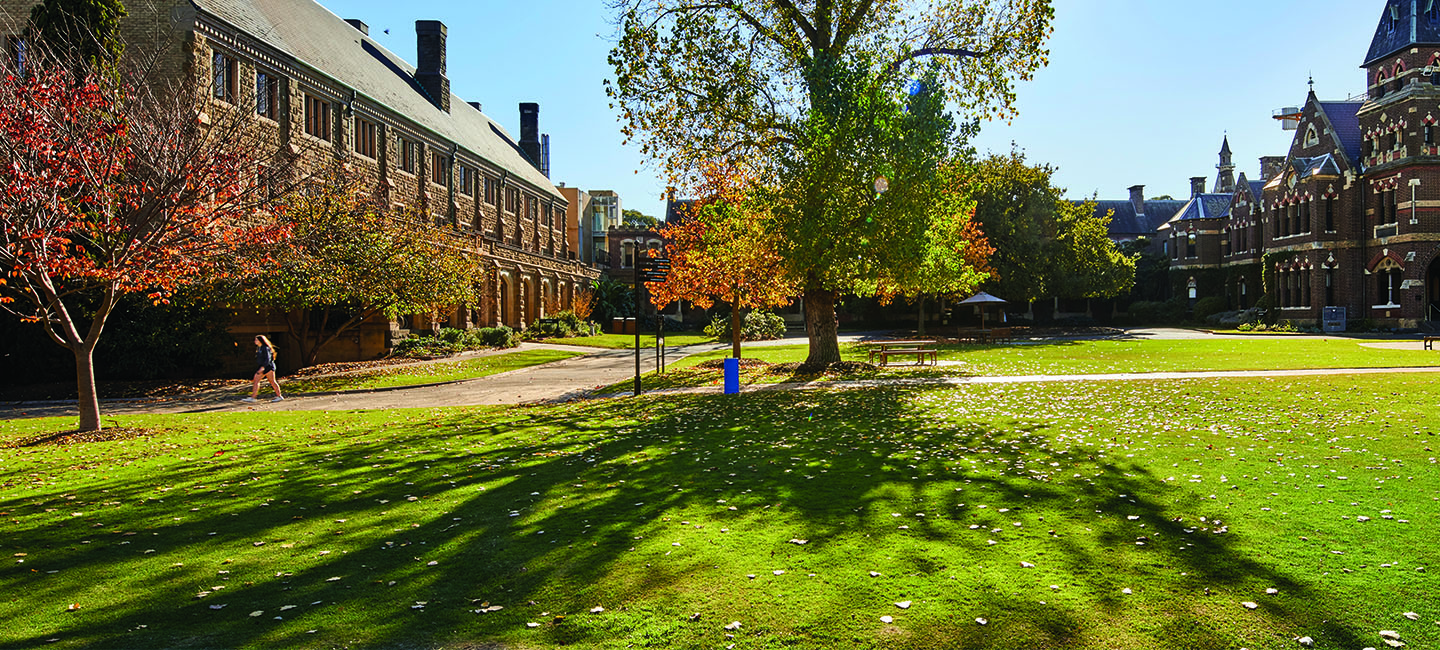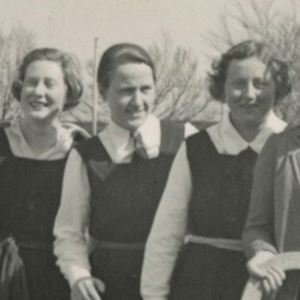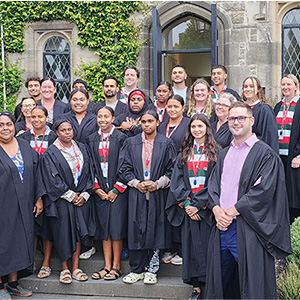

Buried treasure: Jewels in the College Collections
Story by Dawn Leicester. Many years ago when I was a student, I was lucky enough to have a Library Bursary.
In exchange for a discount of my accommodation costs, I worked for ten hours a week in the Leeper Library under the direction of the formidable College Librarian, Miss Jean Waller and her locum, Mrs Margaret Brown.
One of my assignments was to take part in a Library ‘stocktake’ as we endeavoured to determine what books actually existed in the rabbit warren of rooms that now house the Warden’s office and various members of the Advancement team, and then to ensure that all were correctly catalogued and recorded. That time is a blur of images, all of which seem to involve perching at the top of a ladder – being the youngest member of the team meant that I was volunteered for the active work – and a great deal of dust.
I also recall, however, the great excitement as works were uncovered that dated back to the 17th and 18th centuries and the following murmurs that mixed delight with consternation as we realised that, not only had we had these treasures filed with scant regard for their value, but also that constraints of the College budget meant that properly storing and indeed insuring them would be a challenge.
Time has passed on and the Library has moved from Leeper to the Evan Burge building and the sense of chaos has long gone. Much work has been done to locate, catalogue and preserve the College’s hidden treasure, but we continue to be pleasantly surprised by the bounty within. Recently, Ian Donaldson and John Batt (both TC 1954) have been investigating the Library’s collections and have produced a fascinating account of their finds.
The Trinity Library has been an integral part of the environs of Trinity since the first days of the College. When novelist Anthony Trollope visited the University in 1872 he noted that “there was Trinity College, but as yet there were not collegians’. Despite this, the plans for Trinity’s future were well advanced with the provision for a significant library to serve the needs of future students being something for which the first Warden, Alexander Leeper was a passionate advocate.
The early Library collections were the result of generous benefactions from interested parties. As Donaldson and Batt note: ‘One of the most significant of these early benefactions came from the historian and educationalist G W Rusden, who in 1882 donated his personal collection of 1,500 volumes to the College. One item from the Rusden collection, now housed in the Perry Room in the very building (nowadays known as Leeper) that Rusden’s friend Anthony Trollope had admired in 1872, is a copy of Trollope’s Australia and New Zealand in which the writer’s visit to Trinity is recorded: it was presented to Rusden, as the inscription declares, ‘with the Author’s kindest regards’. Some 22 surviving letters between Rusden and Trollope are also included in the collection, as well as a letter from Charles Dickens – whose sons, Alfred and Edward, Rusden had befriended after their arrival in Australia in the 1860s – accompanying the splendid 26-volume Chapman & Hall edition of Dickens’s works, illustrated by ‘Phiz’, which Dickens had presented to Rusden ‘as an assurance of my friendship and grateful regard’.’
One of Rusden’s generous gifts to the College remains a jewel of the Trinity Library to this day: a Second Folio of Shakespeare’s works published in 1632. Ian Donaldson explains its significance: ‘The Second Folio, prepared some nine years after the First Folio by several of the printers who had been associated with the original venture, is essentially a page-by- page reprint of its predecessor. It includes, however, a new preliminary poem by John Milton, ‘On Shakespeare’ – Milton’s first printed work, anonymously presented here – together with some hundreds of &lsquo

.jpg?width=300&height=300&ext=.jpg)

